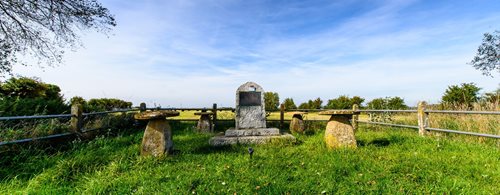One of very few battles fought in Somerset since King Alfred’s time, the Battle of Sedgemoor was our one attempt to change the political landscape of Britain, but it ended badly for Somerset. The battle site at Westonzoyland is easy to visit, and so much is known about this comparatively recent conflict —6 July 1685 — that it’s easy to work out how an old-fashioned ‘pitched battle’ was fought on otherwise tranquil farmland. The annual re-enactment is spectacular.
In 1685 the newly crowned James II was highly unpopular for his Catholicism and high-handed ways. There was talk of a Protestant coup, led by the Duke of Monmouth, illegitimate son of the previous king, James II’s older brother Charles II. The Duke landed from France at Lyme Regis and gathered an enthusiastic following, including many local people. After a few skirmishes with royal troops, he and an army of about 3500 reached Bridgwater, where they fortified the town.
Monmouth’s plan was to sally out under cover of night with infantry and cavalry, led by a local guide, to attack the smaller royal force encamped at nearby Westonzoyland in darkness, and impossible to cross the now-famous Bussex Rhyne after the guide failed to find the safe crossing point. 
A shot was fired at about 2 am, night patrols of royalist troops engaged with the rebels, and the Westonzoyland garrison was mobilised. Their well-trained and experienced cavalry had no difficulty crossing the rhyne and putting Monmouth’s entire army to flight. By daylight the ‘Pitchfork Rebellion’ was all over, except for the bitter aftermath.
Monmouth fled to the south coast, but was soon captured and beheaded in London.
His army tried to melt away, but about a thousand of his followers were captured and several hundred hanged among other savage reprisals.
The notorious Judge George Jeffreys conducted his Bloody Assizes in many Somerset towns, hanging rebels and supposed rebels without much ceremony.
James II clung to power against mounting opposition for another three years, finally being driven into exile by a much stronger and better-backed political coup, William of Orange’s Glorious Revolution.
Judge Jeffreys was hunted down and hanged.